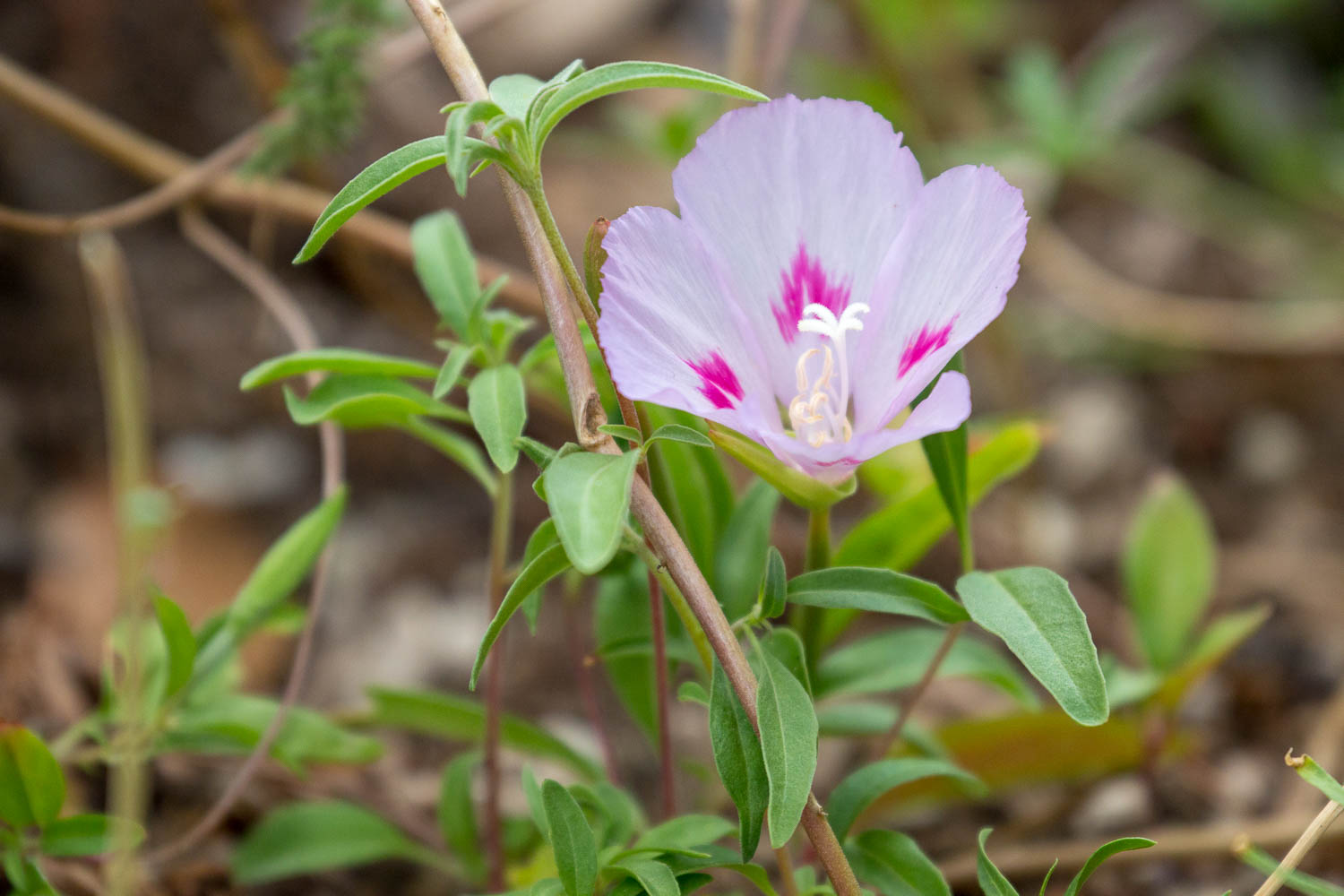During a workshop in February 2017, we created a pollinator garden in SPAWN’s Nursery. All plants in this garden provide pollen and nectar to native bees and other local pollinators, and are deer resistant.
So far the plants have survived occasional browsing by the family of deer living near the nursery this summer! Our garden contains 18 species of plants, providing host plants for about the same number of butterfly species. See some of the plants that are currently in bloom in our garden pictured below.

Farewell-to-spring (Clarkia amoena ssp. huntiana)
Farewell-to-spring is an annual wildflower that can tolerate a wide range of conditions. It can grow in clay and sandy soils, in dry or moist areas, and in light conditions ranging from full sun to partial shade! It is commonly found growing on hillsides, blooms from June through August, and provides color in the hills long after the grasses have turned golden. The bloom season in the garden can be extended by providing occasional summer water. The flowers provide nectar for European honey bees, bumble bees, mason bees, butterflies and other beneficial insects. Seeds can be toasted and eaten as a delicacy.

Hairy Gumplant (Grindelia hirsutula)
Grindelia species typically grow in coastal areas with companion species such as Seaside Daisy (Erigeron glaucus) and Coyote Brush (Baccharis pilularis). Hairy Gumplant does well in gardens, particularly in full sun. Its yellow daisy flowers provide food for native bees, such as small carpenter bees, sweat bees, mason bees, leaf-cutting bees, and summer long-horned bees, as well as honeybees. Gumplant also attracts butterflies, beetles, and syrphid flies. Birds benefit as well, finding a food source in the sunflower-like seeds which ripen in the fall. The flowers bloom from late spring through about October, providing pollen and nectar during the fall when few plants are in bloom and resources are scarce.

Narrow-leaf Milkweed (Asclepias fascicularis)
Narrow-leaf Milkweed is the only locally native type of milkweed, and grows well in Marin just about anywhere as long as it is in full sun. Flowers are a light pink color and grow in ball-shaped clusters of as many as fifty small flowers. We started out with just five Milkweed plants, and they have quickly spread into a large drift! This perennial dies back in the fall and flowering stalks can be cut down after the bloom cycle is complete. The strong fibers of the stalks were used by native peoples as cordage for nets, rope, and clothing. Milkweed species are the only host plant for Monarch butterflies and are frequently visited by Swallowtail and other butterflies, as well as native bees, for their nectar.

Pearly Everlasting (Anaphalis margaritacea)
Pearly Everlasting has a distinctively scented flowers that bloom in the summer. This tough plant can thrive in just about any soil, including sand and clay soils, and does well on slopes. It thrives in sun near the coast, and in partial shade inland. The flowers have the appearance of pearls, and stalks can grow up to three feet tall. Pearly Everlasting is a host plant for American Lady and Painted Lady butterflies. The flower is pollinated by butterflies and moths. This plant was once commonly planted in cottage gardens.

Soap Root (Chlorogalum pomeridianum)
Soap plant is commonly found in Oak woodland, grassland, and chaparral plant communities, and does well in full sun and partial shade. It is a host plant for Brown Elfin Butterflies and is pollinated mainly by bees, including honeybees, carpenter bees, mining bees, bumblebees, and occasionally by Alan’s hummingbirds! The deer love to eat the flowers, but they leave the bulb alone, so it will grow back year after year. The root contains saponins and can be used as a laundry soap, shampoo, or dish detergent.

Yarrow (Achillea millefolium)
Yarrow is a versatile plant that can grow in a wide variety of plant communities. Its main requirements are sun and good drainage. Yarrow is is a host plant for the Painted Lady butterfly, and its flowers are frequently visited by sweat bees, masked bees, leaf-cutting bees, small carpenter bees, bumblebees, and honey bees. It also attracts beneficial insects such as predatory wasps ladybugs, tachnid flies, and hoverflies. These beneficial insects prey on many of the pest insects that frequently show up in gardens. Yarrow is known as a tonic in herbal medicine, and young leaves can be harvested in early spring for use in soup and salads.




